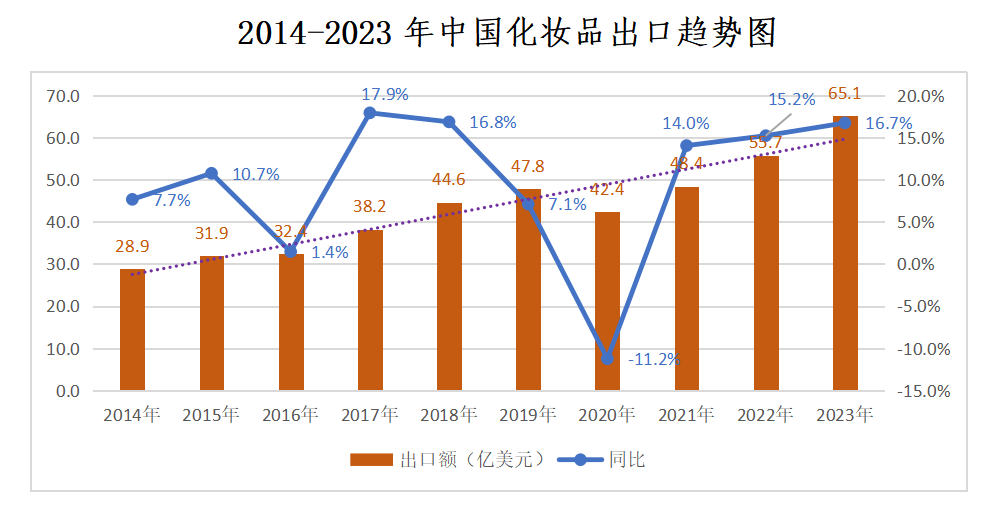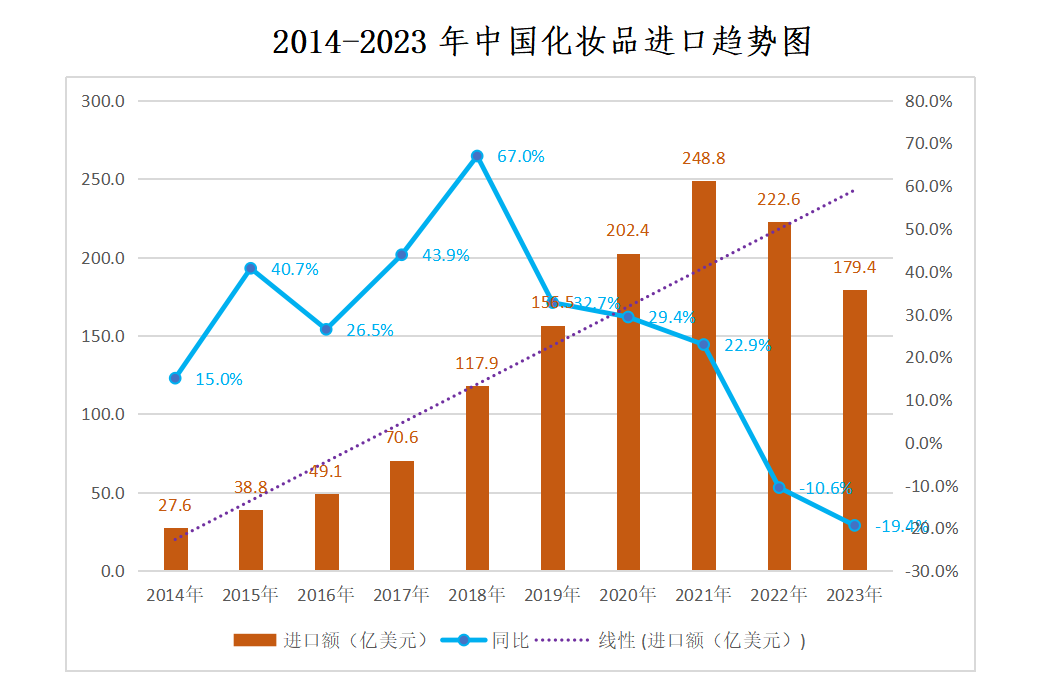An analysis of China's Foreign Trade in Cosmetics
With the continuous growth of China's economy and the evolution of consumers' aesthetic concepts, the cosmetics industry has ushered in unprecedented development opportunities. The domestic cosmetics market is increasingly prosperous. Meanwhile, the Chinese cosmetics’ international market has also shown stronger and stronger competitiveness.
1. Trends in China's cosmetic exports
In recent years, Chinese cosmetics’ export volume has shown a steady upward trend. From 2014 to 2023, cosmetics exports increased from $2.89 billion to $6.51 billion. It reflects the booming development of China's cosmetics industry and highlights its growing importance in the global market. Although exports declined in 2020 due to the impact of the epidemic, it quickly returned to growth.

Data source : CHINA CHAMBER OF COMMERCE OF MEDICINES & HEALTH PRODUCTS IMPORTERS & EXPORTERS collated according to customs data
In terms of export markets, China's cosmetics have spread all over the world. The United States, Hong Kong, the United Kingdom, Japan and Indonesia have become the top five export markets for Chinese cosmetics, accounting for nearly half of the total exports. Among them, the United States topped the list with a 20.5% market share, with exports reaching $1.33 billion, an increase of 7.9%. It is worth mentioning that the Indonesian market rose to the fifth place with an export value of 270 million dollars and an amazing growth rate of 67.7%, becoming an emerging market for China's cosmetics exports.
As for the export products, beauty care products and personal care products are the main force of China's cosmetics exports. In 2023, the export value of beauty and skin care products reached 3.74 billion dollars. Although perfume exports’ volume is relatively small, it has a speedy growth rate, with a year-on-year growth rate of 49.6%, especially in the US and UK markets, where the growth momentum is particularly strong.
2. China's cosmetic import status
China's cosmetics import business has continued to boom over the past decade, growing from $2.76 billion in 2014 to $17.94 billion in 2023. However, the number of cosmetics imported hit a high of 24.88 billion dollars in 2021, and its growth rate has begun to slow down gradually, and even entered a negative growth stage. The phenomenon reflects a new industry trend: the market dominance of foreign brands is being challenged as local brands rise to prominence.

Data source : CHINA CHAMBER OF COMMERCE OF MEDICINES & HEALTH PRODUCTS IMPORTERS & EXPORTERS collated according to customs data
In terms of import markets, China's cosmetics market also shows a diversified characteristics. In 2023, China imports cosmetics mainly from the U.S., Japan, South Korea and France. However, compared with the vigorous development of the export market, the import market showed a slowing growth trend. Affected by multiple factors such as the domestic and foreign economic environment and the rise of domestic cosmetics enterprises, the growth rate of cosmetics exports from the five major import source countries to China has generally slowed down, and some countries even have negative growth.
As for the imported product categories, beauty care products and personal care products are still the main categories. However, imports of both categories decreased compared to previous years. This change reflects the transformation of domestic consumer demand, and highlights the intense competitiveness of domestic cosmetics in the market. With domestic cosmetics enterprises innovation and improvement, more and more consumers have begun to choose cost-effective domestic cosmetics, which has caused a certain impact on the imported cosmetics market.
China's cosmetics industry has shown great potential in the international market, with significant growth in export volume and value, enhancing global competitiveness. Looking forward to the future, the status of the industry in international trade will be further enhanced. Enterprises need to strengthen their own strength, improve quality and service to meet domestic and foreign demand and promote the sustainable development of the industry.














 WhatsApp
WhatsApp Wechat
Wechat